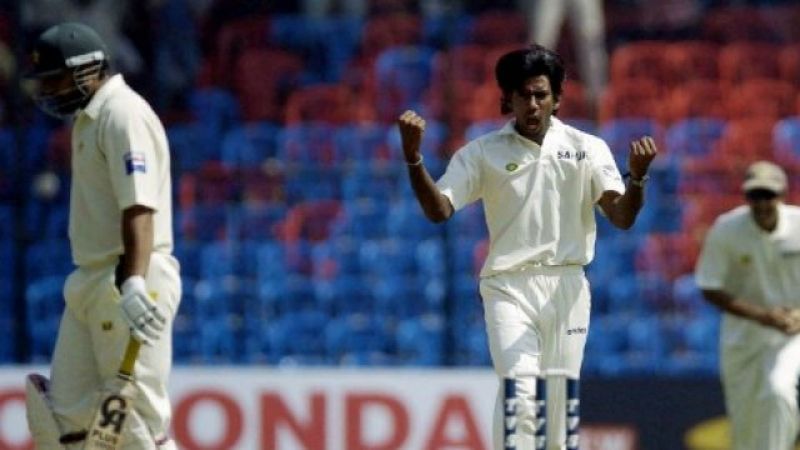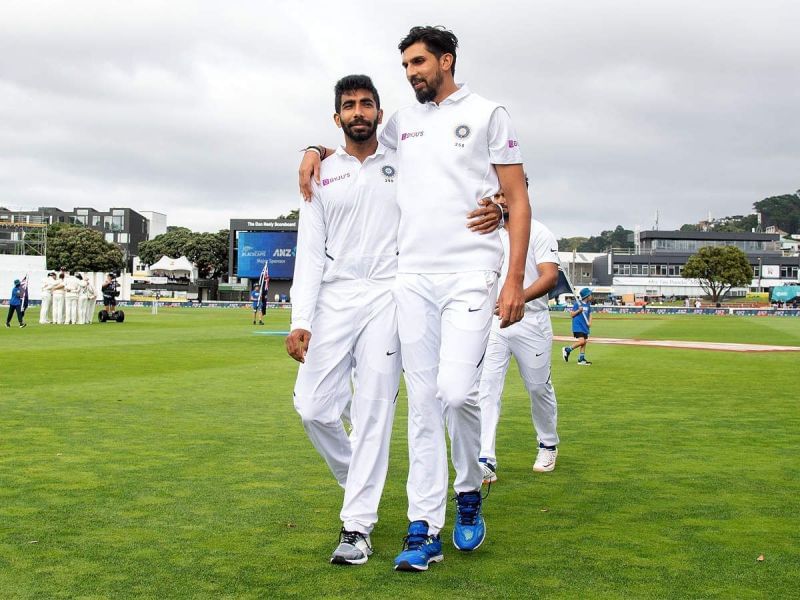
"Hats off to Ishant, the workhorse of Indian pace department for 15 years"- L Balaji [Exclusive]

When Ishant Sharma trapped Dan Lawrence leg before wicket on Monday for his 300th victim, the 32-year-old reached a milestone that only five other Indians – Kumble (619), Kapil Dev (434), Harbhajan Singh (417), Ravichandran Ashwin (386) and Zaheer Khan (311) – three spinners and two pacers – have done before.
It took quite a while for the lanky right-arm pacer to reach this far, but it is no mean feat and Sharma certainly deserves all the accolades that come his way.
Many, though, felt he ought to have got here much earlier, but it was beyond him and he definitely tried hard.
For someone who has been playing 14 years of international cricket and who is two shy of his 100th Test, Sharma ought to have taken a lot more wickets than he actually has. His strike rate of 61.1 balls for every wicket is better than some of the fast bowling legends of the game, but the general feeling has always been whether Sharma has done real justice to his ability.
The raw talent with which he burst into the international scene as an 18-year-old in 2007 and making one of the all-time greats Ricky Ponting dance to his tunes on his maiden tour to Australia in 2008, somehow seemed to fade away after the retirement of Zaheer Khan in 2014 (at which time Sharma played 55 Tests and took 165 wickets). But, he has rediscovered himself in the company of Jasprit Bumrah and Mohammed Shami, and the Delhi pacer has been bowling at his best over the last three or four years.
His body has taken a heavy toll and he has missed matches to injuries. Sharma is on yet another comeback trail to Tests in this ongoing series against England after missing the Australia leg due to left rib cage pain that he sustained during the IPL 2020 and which eventually revealed a left internal oblique muscle tear.
Former India paceman Lakshmipathi Balaji, who finished his Test career before Sharma began his but who shared the Indian dressing in the ODIs with the Delhi pacer, doffed his hat to the latest entrant to the 300-Test wicket club.
Talking exclusively to Sportskeeda from Chennai, Balaji, now a bowling coach with Chennai Super Kings, said -
“Hats off to Ishant. It is very rare for a fast bowler from the Indian sub-continent of this generation to take 300 Test wickets and to approach 100 Test appearances. Ishant is someone who has definitely achieved lofty heights among the current generation of fast bowlers.”
Balaji, who appeared in 8 Tests, 30 ODIs and 5 T20Is for the country and took a combined tally of 71 international scalps, added -
"It is a big, big achievement by Ishant, especially for him to stick to one format, to play with the red ball for nearly 15 years."
Balaji put into perspective the numbers that many feel do not do justice to Sharma’s longevity in the game.
“That was always bound to happen to a sub-continent fast bowler. The present era sees a lot of flat wickets in the sub-continent and the spinners dominating the scene. If you look at the last 20-25 Tests that Ishant has played in, and he has been at his best in this period even as the spinners have dominated and took more wickets.”
Balaji analysed further about bowling in the sub-continent -
“When you play three spinners in the sub-continent, fast bowlers are not majorly used in the second innings. Pacers are bound to get your quota of 25-30 overs in the first innings, but in the second, spinners bowl a lot. And pacers come in to give rest to the spinners.”
And on other occasions, he was bowling on pitches that resembled a “road” – “First two days, it felt like we were playing on the road,” Sharma said about the first two days’ pitch of the first Test in the current series.
Numbers do not tell the true story - L Balaji

Balaji further shed light on how Ishant's association with Jasprit Bumrah and Mohammed Shami has helped hone his skills.
“Ishant has great support from Jasprit Bumrah and Md Shami. For a while, he was alone, and previously, he formed a great combination with Zaheer Khan. Numbers do not tell the true story. The numbers do not match with what he has given to the country, the way he bowled, the way he controlled things from his end, the way he has come back each time after an injury.”
A fully-fit Sharma is still an automatic choice into the Test playing 11. Balaji made mention of the fact that the lanky pacer is still the primary member of the Indian bowling attack, while being able to maintain pace at the 140 kph mark despite growing in age. (Just for an understanding, West Indies pace legend Curtly Ambrose took 405 wickets in the same 98 Tests in his career.)
“Ishant has been a workhorse in the Indian pace department for 15 years. For the Indian team, he gave a decent competition to the opposition. Pace bowling is an injury-prone department. Despite his injuries, he is still picking up wickets, still has pace and is working hard.”
Balaji threw some light on why Sharma did not do real justice to his number one status in the Indian bowling department.
“One of the best ways to think is his skill sets were pretty much on the defensive side. If you look at his last 25 Tests, his strike rate has gone up. Tall bowlers on sub-continent pitches tend to bowl back-of-the-length pretty late in their careers. This comes with experience gained over years and finding the right wicket-taking length.”
Ishant is spearheading the Indian attack whenever he plays - L Balaji

Balaji, however, was not really bothered about Sharma taking an average of three wickets a Test.
“Ishant has given solidity from his end, controlling the run-scoring. If you look at the wickets, he may not have that many five-wicket hauls (he has 11 five-wicket hauls while Ambrose has 22). But he has given the right breakthroughs when the ball was reversing."
"I still remember the 2008 Nagpur Test, removing Michael Clarke in both the innings. You will end up with one or two wickets when you have another fast bowler performing well. You look at the West Indies pace quartet. Except Malcolm Marshall (376), the others took 200-260 wickets. They shared wickets between them."
The former Indian speedster additionally added that Ishant cannot be compared to yesteryear legends, and instead, his longevity should be heralded.
“Similarly, after Zaheer Khan’s retirement, Shami, Umesh Yadav and Bumrah have taken a lot of wickets and Ishant has taken 2-3 wickets consistently. You cannot compare Ishant with Richard Hadlee, Dennis Lillee, Courtney Walsh, Ambrose and Kapil Dev as they were all of a different class and kept taking five-wicket hauls like nobody’s business.
“Sometimes, numbers don’t tell the true value of a player. Ishant’s longevity is huge for a fast bowler. You may compare him with England’s Stuart Broad, who started around the same time as Ishant but has played 144 Tests and taken 517 wickets. Ishant is still going strong, bowling at a pace, taking top-order wickets and is still spearheading the Indian bowling attack whenever he plays.”
For the record, Sharma has taken 137 of his 300 wickets in 51 Tests in the Asian sub-continent – 101 in 38 Tests in India, 10 in 4 Tests in Bangladesh and 26 in 9 Tests in Sri Lanka.
It has, indeed, been a rough ride with the smooth for Sharma, who admitted to have had a “roller-coaster life so far” after reaching 300 Test wickets.